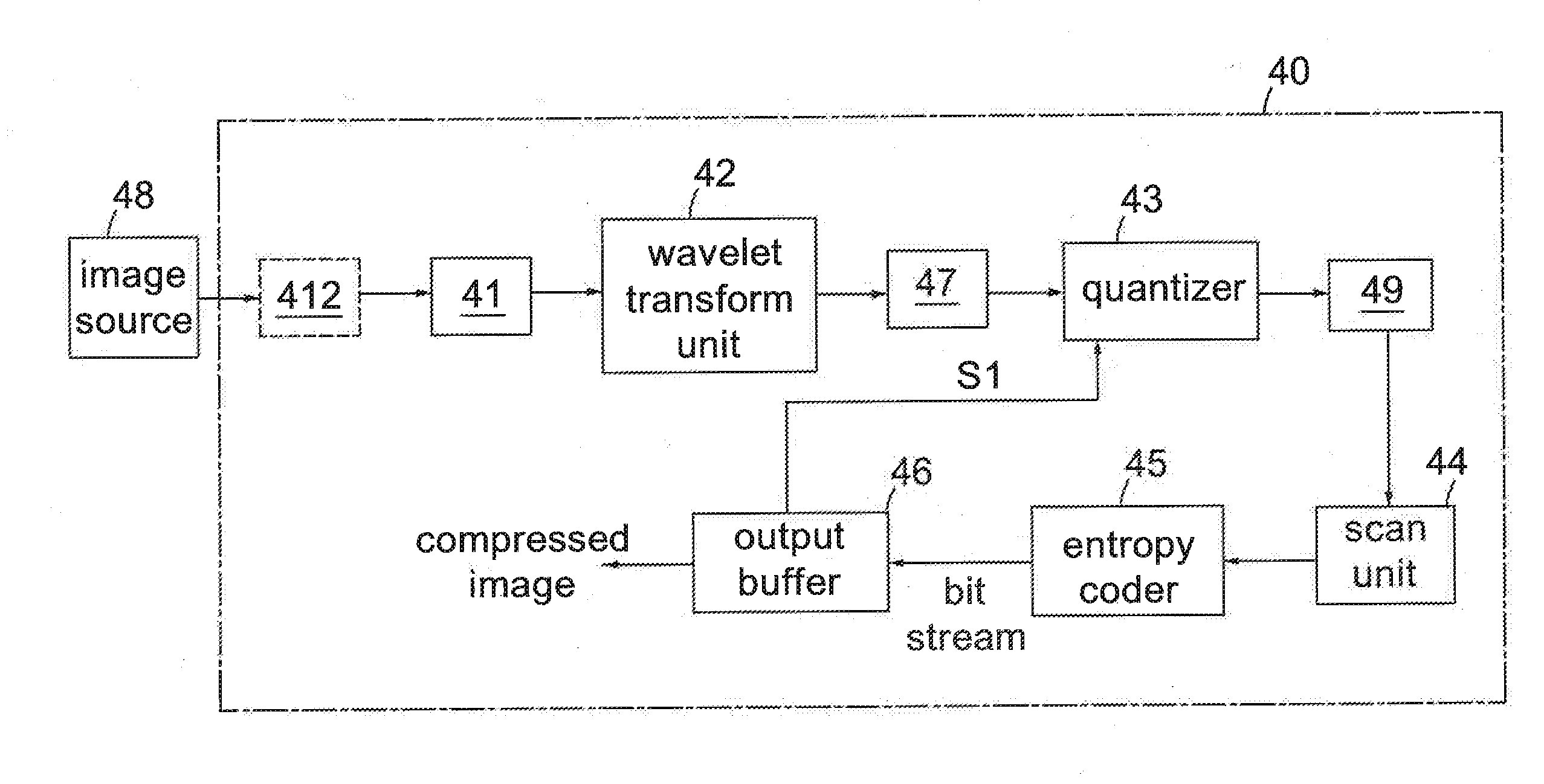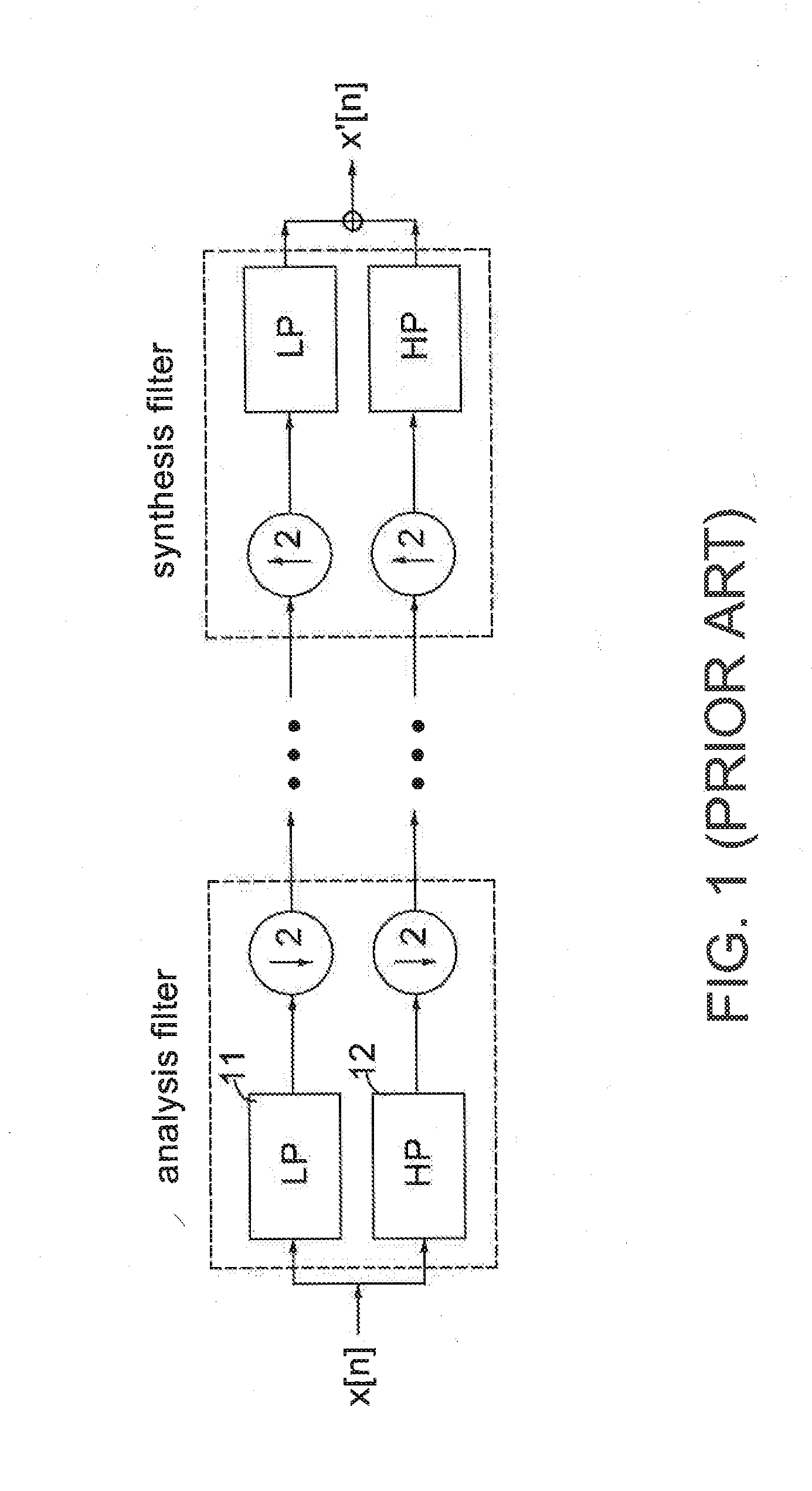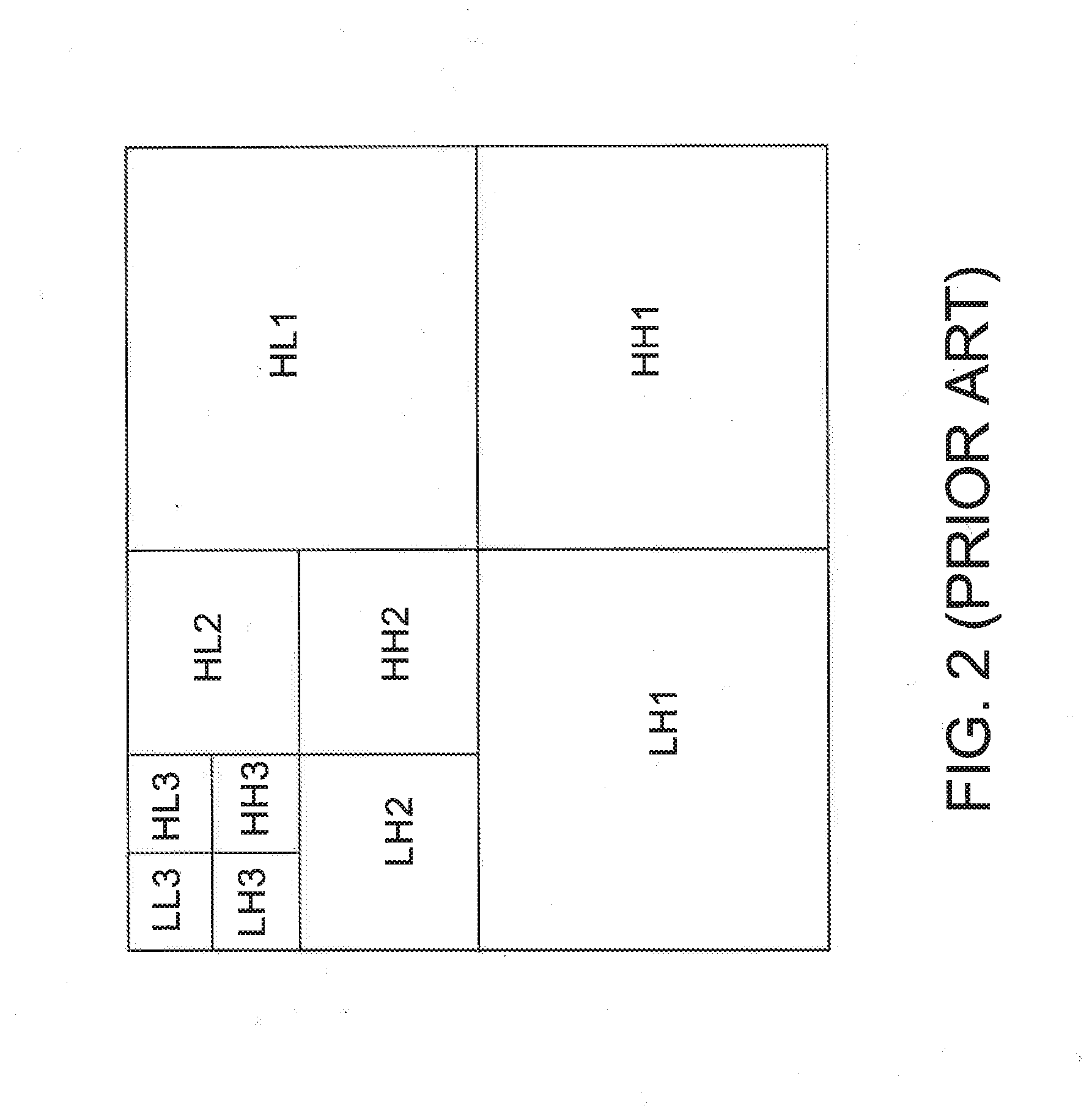Image encoding system and method thereof
a technology of image encoding and image, applied in the field of image processing, can solve the problems of increasing the probability of finding large strings of zeros, and the inability of the dram-bufferless real-time image transmission system to afford the 2d wavelet image encoding algorithm, and achieve the effect of good compression quality
- Summary
- Abstract
- Description
- Claims
- Application Information
AI Technical Summary
Benefits of technology
Problems solved by technology
Method used
Image
Examples
Embodiment Construction
[0036]As used herein and in the claims, the term “a,”“an,”“the” and similar terms used in the context of the present invention (especially in the context of the claims) are to be construed to cover both the singular and plural unless otherwise indicated herein or clearly contradicted by the context. Besides, the term “dual-line-based wavelet transform” refers to a first modified wavelet transform (including an addition operation, a subtraction operation and 1D wavelet transform) simultaneously performed on two consecutive component lines, such as two consecutive Y-component lines in YUV color space; the term “four-line-based wavelet transform” refers to a second modified wavelet transform (including addition operations, subtraction operations and 1D wavelet transform) simultaneously performed on four consecutive component lines, such as four consecutive Y-component lines in YUV color space; the term “hybrid wavelet transform” refers to a combination of the dual-line based wavelet tr...
PUM
 Login to View More
Login to View More Abstract
Description
Claims
Application Information
 Login to View More
Login to View More - R&D
- Intellectual Property
- Life Sciences
- Materials
- Tech Scout
- Unparalleled Data Quality
- Higher Quality Content
- 60% Fewer Hallucinations
Browse by: Latest US Patents, China's latest patents, Technical Efficacy Thesaurus, Application Domain, Technology Topic, Popular Technical Reports.
© 2025 PatSnap. All rights reserved.Legal|Privacy policy|Modern Slavery Act Transparency Statement|Sitemap|About US| Contact US: help@patsnap.com



